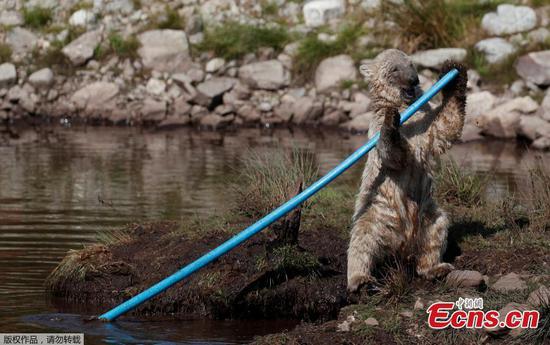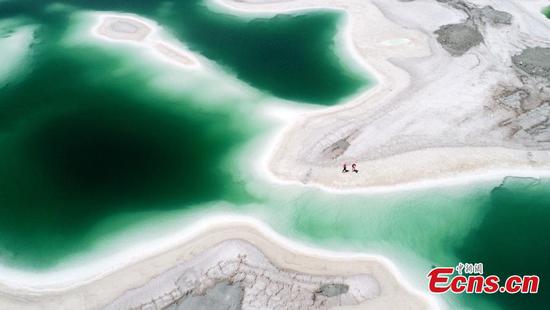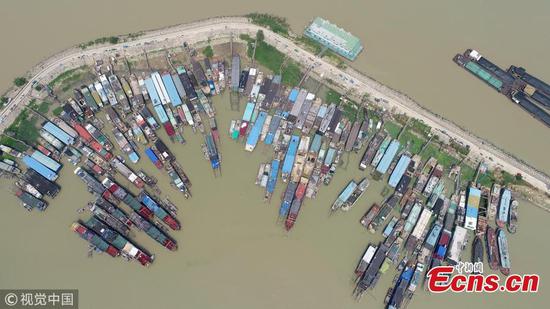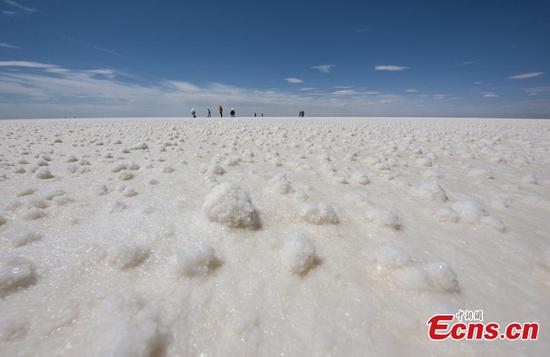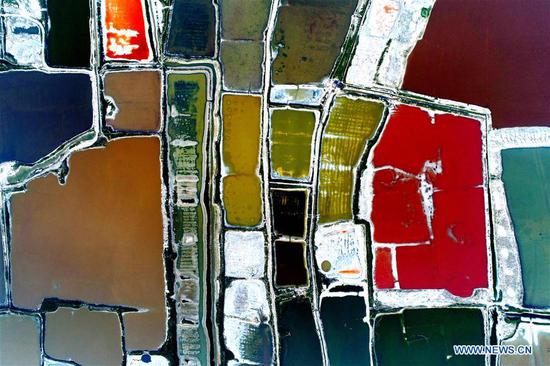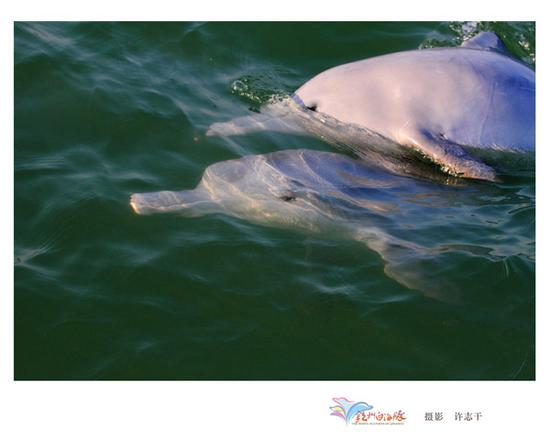
(PHOTO BY XU ZHIGAN/FOR CHINA DAILY)
To prove Sanniang Bay was a base for Chinese white dolphins and secure funding from Peking University to set up a biodiversity research center in the area, Pan had to come up with an idea.
He asked local officials to help him locate trawlers in the area, as he knew the contents of their nets would attract the dolphins.
However, once he proved his point and built the research facility, Pan immediately called a halt to the proceedings.
"Trawlers damage the structure of the sea floor, which adversely affects marine life," he explains.
By a process of trial and error, Pan gradually got locating the dolphins down to a fine art.
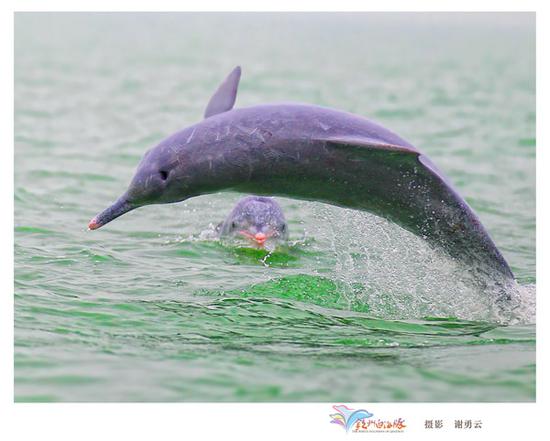
Immediately before, or just after, the tide rises to its peak, shoals of fish would move closer to the coast and white dolphins would follow them, making them easier to spot, Pan says.
He would go to sea for a couple of hours a day, around 10 to 15 days a month, and used digital cameras to take thousands of photos of the marine mammals.
"You have to catch the moment where the dolphins take a breath, when their backs emerge from out of the water," Pan says.
Every Chinese white dolphin is unique, from the color of their skin and their markings, down to the shape of their dorsal fins.
The task of processing the photos was as huge as it was painstaking, says Wei Meijiao, a worker at the local white dolphin research facility established by Pan.
Differences between the whiter dolphins are relatively easy to spot. The gray ones, however, are often so difficult to tell apart that scientists rely on software to identify them, Wei adds.
They also have to keep track of every dolphin to accurately calculate population numbers. At the same time, Pan has also suggested to the local government that local industrial projects be moved west of the bay to help keep the shallow coastal waters, where the white dolphins live, intact.
The local government has also prohibited large-scale trawling and excessive fishing in the area.
These arrangements have helped the number of white dolphins to grow from 100 in 2006 to around 230 today.









